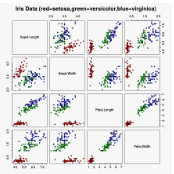In this work, we design a fully complex-valued neural network for the task of iris recognition. Unlike the problem of general object recognition, where real-valued neural networks can be used to extract pertinent features, iris recognition depends on the extraction of both phase and magnitude information from the input iris texture in order to better represent its biometric content. This necessitates the extraction and processing of phase information that cannot be effectively handled by a real-valued neural network. In this regard, we design a fully complex-valued neural network that can better capture the multi-scale, multi-resolution, and multi-orientation phase and amplitude features of the iris texture. We show a strong correspondence of the proposed complex-valued iris recognition network with Gabor wavelets that are used to generate the classical IrisCode; however, the proposed method enables a new capability of automatic complex-valued feature learning that is tailored for iris recognition. We conduct experiments on three benchmark datasets - ND-CrossSensor-2013, CASIA-Iris-Thousand and UBIRIS.v2 - and show the benefit of the proposed network for the task of iris recognition. We exploit visualization schemes to convey how the complex-valued network, when compared to standard real-valued networks, extracts fundamentally different features from the iris texture.
翻译:在这项工作中,我们设计了一个完全复杂的神经网络,以完成虹膜识别任务。与一般物体识别问题不同的是,实际价值的神经网络可以用来提取相关特性,对虹膜的识别取决于从输入的虹膜纹理中提取阶段和数量信息,以便更好地代表其生物测定内容。这就需要提取和处理无法由真正价值的神经网络有效处理的阶段信息。在这方面,我们设计了一个完全复杂价值的神经网络,以更好地捕捉虹膜纹理的多尺度、多分辨率和多方向阶段和振幅特征。我们展示了拟议的复杂价值的虹膜识别网络与古典IrisCode所使用的Gabor波盘的强烈对应性信息;然而,拟议的方法使得能够产生新的能力,即自动获得复杂价值的特征学习,而这种学习是专门为爱丽丝识别而设计的。我们对三个基准数据集进行了实验——ND-CrossSensor-2013,CASIA-Iris-Thonder和UBIRIS。2——我们展示了拟议的复杂图像网络的效益,在对图像识别任务进行对比时,我们如何将所设想的网络的图像判判的图像网络的图,从而将如何评估了对常规网络的图图的图的图的图的图的图的图的图的图。





